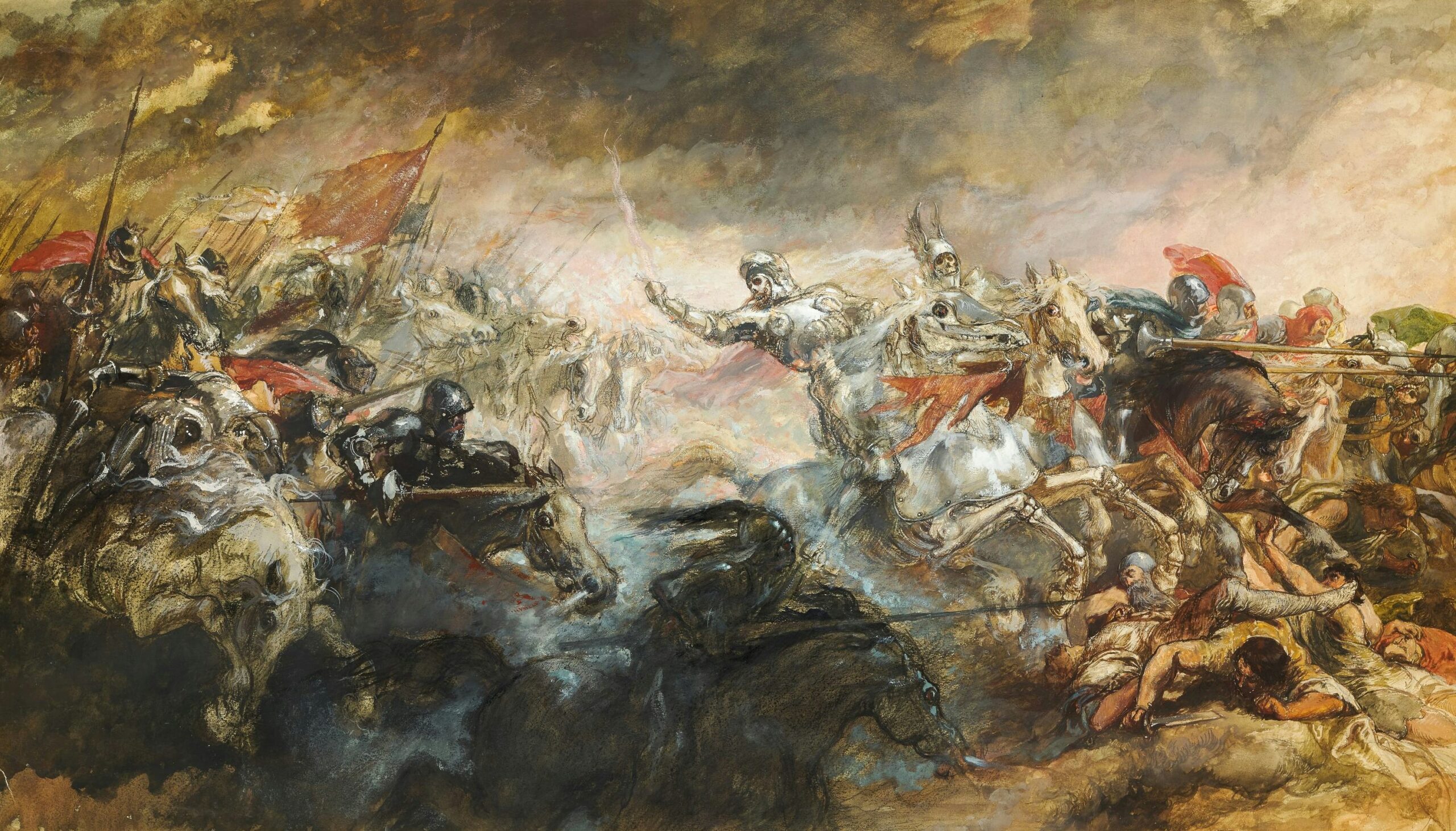The Battle of Five Armies. The Battle of the Hornburg (Helm’s Deep). The Battle of Pelennor Fields (the Raising of the Siege of Minas Tirith). These were epic, even before they were ever animated or filmed.
Such battles bring a new element of drama to a fantasy PbtA campaign, but the challenge is how to handle them cinematically and at a high level, without getting bogged down in mechanics. You’re not going to manage every individual soldier as you might in a wargame.
Here are three frameworks for accomplishing this:
- “Mass Combat,” by Brian Holland – As published in Session Zero Issue #7: Halo, Fang and Horn, this introduces Units, Champions, and assorted custom moves, and includes a two-page example.
- Battlefield Commander Rules, by Ben Moxon – Defines player-controlled Units as having Size, Weight, and Morale, and has custom moves for Units and for characters.
- Few Die Well, by Tam H. – Adding a stat and aptly named custom move for each of Experience, Preparation, Stakes, and Environment, this framework adds three GM moves: An opportunity to take a mission appears, A battle event occurs, and End the battle as your prep demands. It also includes three random tables to use for inspiration.
Each framework is short and worth reading in full. Pick the one that best fits your needs.
Using Regular GM Moves
Sadly, I discovered the above only after running battles myself in Dungeon World.
We had a “Battle of Ten Armies” to end my first campaign. For the regular GM move of “Use up their resources,” I described the destruction of a third of an army at a time (again, there were ten armies!). Very cinematic! That was the first time I’d run a large battle with DW, and I thought it went great. In retrospect, I would have mapped a few more GM moves to the armies, using PbtA move brainstorming.
For another campaign in its final months, with one player Level 10 and the others a few levels behind, the players specifically asked (in Stars & Wishes) for a tough battle. They wanted to showcase their higher stats and advanced moves. We had an epic battle that spanned two sessions: a “Battle of Six Armies” but the players’ forces were among the besiegers. There were a lot of fun twists and turns, and players got to use their high-level moves; when they finally broke into the enemy caverns (3 hours into the session, 6 hours into the battle across the two sessions), the outcome was now clear, the enemy retreating but fighting hard, so I pulled out Homebrew World’s move Gloss Over a Fight. The players loved it, and each narrated some vignette from the mop-up exercises. Such a great move!
For your own games, though, do consider adopting one of the above frameworks. I’ve now updated Fantastic Worlds to include Few Die Well (thanks to Tam for permission).
Painting The Phantom Horseman, 1870-93, by Sir John Gilbert (d.1897), licensed by Birmingham Museums Trust on Unsplash.


